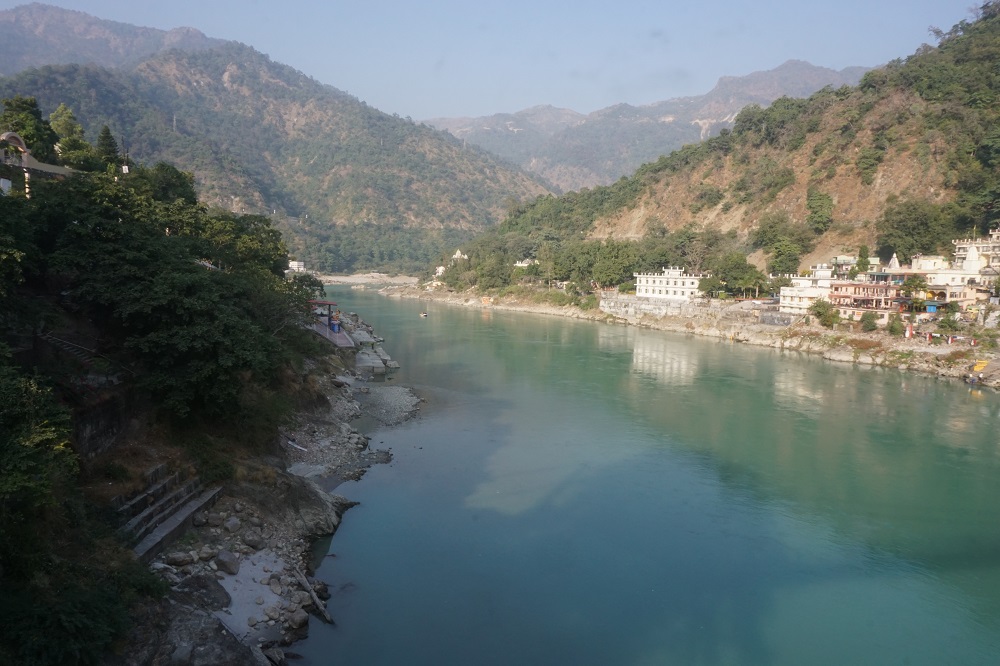From Rights to Legal Protection: Can the Ganga Act 2017 Finally Save the River?
If successful, the Act could not only help protect and conserve India's third largest river, but could also be used to help in the protection of other rivers.

Famous the world over, the 1,557-mile Ganga river gushes from a Himalayan ice cave, coursing eastward through the heart of Northern India to the Bay of Bengal.
A natural, cultural and spiritual wonder, it is a slow death by pollution, however, that threatens to become the river’s lasting legacy if it continues to run the same course as it currently pursues.
Years of mistreatment and unsustainable practices have placed the Ganga River among the five most polluted rivers of the world, and the Himalayas, from which the river originates, as one of the most endangered ecosystems.

For many years, governments and local organisations have invested billions of rupees in devising methods and running numerous campaigns directed at both the clean-up and the restoration of the river, but despite this, many are still mistreating the river, performing illegal and unsustainable practices, and millions continue to use the natural resource as a public drainage system, dumping in it all manner of waste.
Besides it being a spiritual and cultural centre for many Indians and pilgrims across the world, according to the Centre for Science and Environment India, for as much as 43% of India’s population, the Ganga is a lifeline. Civilisations have been built upon its banks and its water is life-giving to these inhabitants.
But what the Ganga gives, it rarely gets back.
You may also like: This Ecological Miracle in Kolkata Is Also the World’s Largest Organic Sewage Management System!
Pollution is destroying the river’s eco-balance and its natural ability to self-purify. Domestic sewage is the major cause of contamination in the river and, according to the Central Pollution Control Board (CPCB), 2,723 million litres a day of sewage is generated by 50 cities located along the river, accounting for over 85% of the river’s pollution load.
From the lack of properly treated urban sewage discharge to open defecation to the discharge of human and animal corpses to the practice of illegal mining of it’s riverbed, the Ganga is already seeing parts completely drying up and many more becoming toxic and harmful to humans and the environment.

In June 2014, the national mission towards a clean Ganga was launched. With a budget of Rs. 20,000 crore, Namami Gange Programme aimed to accomplish the twin objectives of effective abatement of pollution and the rejuvenation of the Ganga. Its implementation proposed a 10-year plan and set forth a number of activities, to target both short-term and longer-term impacts.
In its first two years, however, it was accused of having achieved just one-third of its targets due to lack of synergy between multiple authorities as well as natural calamities causing delays. More recent reports suggest that whilst action has been taken — 65 crematoriums have been built across the five states to prevent bodies being dumped in the river, along with 123 new ghats for restoration — progress continues to be slow and deadlines are frequently pushed back.
On March 20, 2017, a judgment by the Uttarakhand High Court gave Ganga the status of the “first living entity of India” bestowing upon it the rights similar to a living person. Although the preservation of the river is the main objective behind this ruling, it also means that any crimes committed against the river, mostly the dumping of waste, can now be tried in court as the acts will constitute as harm against a person.
Civil society is now calling for a legal framework to give recognition to the Rights of the Ganga River Basin. The move recognises that a fundamentally new form of governance is necessary to protect and restore this precious ecosystem and life provider to so many.

In April this year, a draft was submitted to Minister for Water Resources, River Development, and Ganga Rejuvenation Uma Bharti, for the proposal of a new piece of legislation, the National River Ganga (Rejuvenation Protection and Maintenance) Bill Act 2017, mainly to ensure the cleanliness and rejuvenation of the river. The proposed Ganga Act seems to be in its final stage and, if successfully passed, will make it the first river in the country to be protected by an Act of Parliament.
You may also like: How Three Startups Are Using Innovative Methods to Clean and Restore River Ganga
If successful The Act could help protect the river in a number of ways. Not only would it help to establish the rivers rights to exist and evolve, it would also establish the rights of people and the environment to have access to a clean and health water source, ensure that any behaviour or act that directly harms or threatens to harm the river is prohibited, establish enforcement mechanisms to protect and defend the river’s rights and empower people, communities, civil society, and governments within India to protect and defend the basin’s rights. On top of this it could also serve as a guide to help protect other rivers in the future.
The legal protection of the Ganga is not the first time that law has stepped in to protect the environment. In 2008 Ecuador changed its constitution to give nature “the right to exist, persist, maintain, and regenerate its vital cycles,” in 2010, Bolivia passed the Law of the Rights of Mother Earth, giving nature equal rights to humans, and more recently New Zealand granted it’s third-largest river, the Whanganui, a legal voice.
Currently, many treat the Ganga as property, leaving it vulnerable to abuse. Establishing Rights of the Ganga River Basin would enable government, civil society, and the people of India to take action on behalf of the Ganga to defend it against actions that would interfere with its integrity, existence, and functioning and help to ensure that it not only survives, but thrives.
Amid various attempts and campaigns, many startups founded by young innovative Indians are trying to clean up the Ganga. One such startup called Detect Technologies has developed a system designed to detect pipeline leakages. The Guided Ultrasonic Monitoring of Pipe Systems (GUMPS), can detect oil leakages from oil pipelines which run on the river bed of the Ganga River. Know more about it here.
Like this story? Or have something to share? Write to us: [email protected], or connect with us on Facebook and Twitter.
NEW: Click here to get positive news on WhatsApp!
This story made me
-
97
-
121
-
89
-
167
Tell Us More
We bring stories straight from the heart of India, to inspire millions and create a wave of impact. Our positive movement is growing bigger everyday, and we would love for you to join it.
Please contribute whatever you can, every little penny helps our team in bringing you more stories that support dreams and spread hope.



















